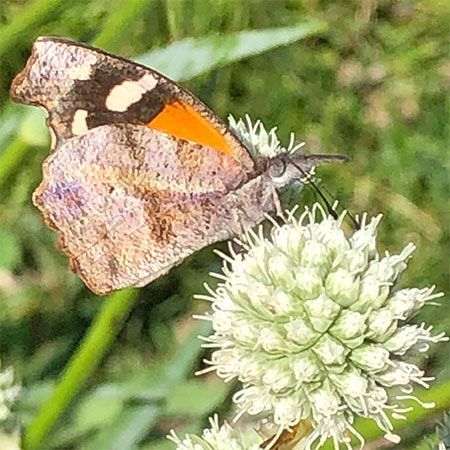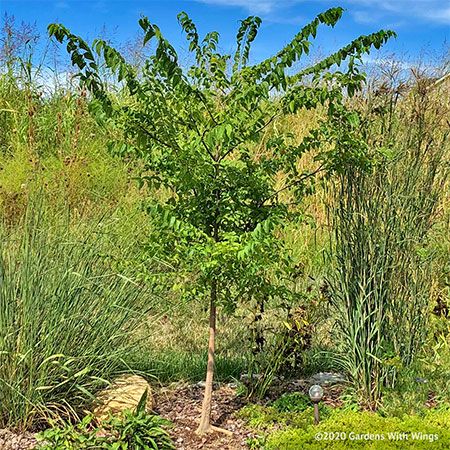A delightful surprise awaited us this year as a unique-looking visitor graced our gardens—the American Snout butterfly. Its presence is a testament to the success of our recent planting of a Sugarberry/Hackberry (Celtis laevigata) tree, which serves as the essential host plant for this fascinating species. The remarkable ability of butterflies to locate their specific host plants, even when seemingly isolated, never ceases to amaze. With my Maltipoo puppies by my side, we’ve truly enjoyed watching nature unfold in our own backyard.
Caught in the act! This American Snout butterfly is enjoying a sweet treat from our Buttonbush blooms. Looks like these two were made for each other!

To our delight, we observed the American Snout flitting around our new tree and were fortunate enough to witness it feeding on the delicate flowers of our Buttonbush (Cephalanthus occidentalis). It seems this butterfly prefers white and yellow blooms, making the Buttonbush a perfect pit stop for refueling during its travels.
The American Snout is a Master of Disguise
The American Snout butterfly (Libytheana carinenta) stands out from its more colorful counterparts due to its unusual appearance. Its elongated mouthparts, resembling a long “snout,” give the butterfly its name. This unique feature is not merely ornamental but allows the butterfly to reach deep into flowers to sip nectar.
With wings folded, the American Snout blends seamlessly into its surroundings, often resembling a dead leaf hanging from a branch. This remarkable camouflage is enhanced by the subdued coloration of its wings, primarily shades of brown and gray. However, when the wings open, a vibrant orange hue is revealed, adding a touch of unexpected beauty to this otherwise understated butterfly.
The Sugarberry/Hackberry Connection
The presence of the American Snout in our garden is directly linked to the introduction of the Sugarberry/Hackberry tree. This deciduous tree, a native of North America, is essential to the American Snout butterfly’s life cycle. The female butterfly meticulously selects the leaves of the Sugarberry/Hackberry to lay her eggs, ensuring the next generation has a readily available food source.

Upon hatching, the caterpillars exclusively feed on the leaves of the host plant, gradually increasing in size and undergoing several molts before pupating. This intricate relationship between the butterfly and its host plant exemplifies the delicate balance within ecosystems.
Beyond the Garden: Migration and Survival
The American Snout is not merely a garden dweller but a seasoned traveler. Their migratory patterns often follow the availability of host plants and suitable nectar sources, such as those found in our garden.
The arrival of the American Snout in our garden indicates a successful migration and highlights the importance of preserving diverse habitats that support these incredible creatures. By planting native trees like the Sugarberry/Hackberry and flowering shrubs like the Buttonbush, we contribute to conserving the butterfly and its entire ecosystem.
A Symbol of Hope and Resilience
The American Snout’s presence in our garden symbolizes hope and resilience. It reminds us of nature’s interconnectedness and the significance of seemingly small actions in supporting biodiversity. As we continue to cultivate our garden with native plants, we eagerly anticipate future visits from this unique and captivating butterfly.
Whether you appreciate the wonders of nature or are an avid butterfly enthusiast, the American Snout butterfly will leave a lasting impression. Its story reminds us of nature’s intricate beauty and delicate balance and encourages us to foster environments where all living creatures can thrive.
For further information on the American Snout butterfly and its fascinating life cycle, you can refer to the following resources:
.




